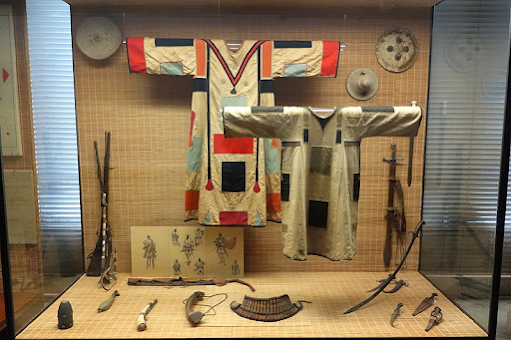The Sudanese Mahdiyya, 1881–1898
A Brief Introduction
Update of 7/25/24: The author recommends the reader also consult a). Fergus Nicoll's A Bibliography of the Mahdīa: بيبلوغرافيا المهدية (Khartoum: Qāsim Data Centre, 2010) and b). Ahmed Ibrahim Abu Shouk's "A Bibliography of the Mahdist State in the Sudan (1881-1898)" Sudanic Africa 10 (1999), 133-168.

During the 19th century Egypt, a nominal piece of the Ottoman Empire, had expanded southwards up the Nile establishing a colonial rule over the regions now known as modern Sudan, South Sudan, and Eritrea (For an in-depth overview of the Turco-Egyptian Sudan see: Hill, Richard Leslie. Egypt in the Sudan, 1820–1881. (London: Oxford University Press, 1966). However, Egypt’s rule over the Sudan was not a pleasant one with a multitude of complaints being caused due to corruption within the Turco-Egyptian regime alongside a number of tribal and religious conflicts (Shuqayr, Na’um. Ta’rikh al-Sudan. ed. Muhammad Abu Salim. (Khartoum: Dar al-Jil, 1981 [originally published in 1903]): pp 315–320; Holt, P. M. The Mahdist State in the Sudan, 1881–1898: A Study of its Origins, Development, and Overthrow, 2nd Edn. (London: Oxford University Press, 1979): pp 32, 40). Thus, when in 1881 the news spread of a Sufi Shaykh named Muhammad Ahmad who’d renounced the government and proclaimed himself the Imam al-Mahdi, an Islamic messiah figure, many watched with anticipation. The government had attempted to apprehend the Shaykh but a small expedition sent against him was met with total defeat on the island of Aba. This, paired with a number of subsequent successes by the Mahdi, quickly propelled his small movement into a large-scale rebellion. By 1883 the Mahdi had effective control over the whole of Kordofan, Sudan’s central province, and by 1884 Egypt ordered the abandonment of the Sudan; later that year Sudan’s capital, Khartoum and those left within, among them the Governor General Gordon Pasha (See: Hill, R. L. A Biographical Dictionary of the Sudan, 2nd Edn. (London: Frank Cass and Company, 1967): pp 138–140; Hill, R. L. Gordon: Yet Another Assessment. (Durham: Sudan Studies Society of the United Kingdom, 1987), were besieged. Khartoum would fall a year later with a Mahdist assault overwhelming the towns starved defenses. Though the Mahdi would not long get to enjoy his victory as he would die of sickness five months later, with his successor; or Khalifa, Abdullahi ibn Muhammad succeeding him. Early in the rule of Abdullahi the Mahdists established their capital at Omdurman and conflicts began with the Ethiopians (A very in-depth analysis of the Mahdist-Ethiopian War is given by @hiddenhist, see: https://youtube.com/playlist?list=PLPtesumNbB7LGIOwzYKLmEAd6orDaQ0I&si=b5MWXsL9H9GQGFLM). The Khalifa’s reign would see the increasing encroachment of European powers into the region, such as the Italians at Kassala, the Belgians in the Congo, and the French in Fashoda, the latter sparked the concern of the British who had since occupied Egypt. Thus, in 1896 an Anglo-Egyptian Army under Sir Herbert Kitchener launched a campaign to depose Mahdist rule in Sudan; later in 1898 the armies of Mahdiyya would be defeated in the battle of Karari (For an in-depth analysis of this battle see: Zulfo, Ismat Hasan. Karari: The Sudanese Account of the Battle of Omdurman. trans. Peter Clark. (Great Britain: Frederick Warne, 1980), with the Khalifa being hunted down and killed a year later in 1899 at Umm Dibaykarat (Peter Malcom Holt gives one of the most well made and in-depth examinations of the Khalifa’s reign in his book The Mahdist State in the Sudan (see fn 2, above). The Mahdi’s son Abd al-Rahman al-Mahdi would reestablish the Ansar, or supporters of the Mahdiyya, in exchange for being a British advocate during WW1 and his family have continued to play an important religious and political role in Sudan since (See: Warburg, Gabriel. Islam, Sectarianism, and Politics in Sudan since the Mahdiyya. (Madison: University of Wisconsin Press, 2003).



Comments
Post a Comment